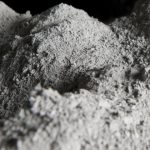Dampness prevention methods:
The following are the precautions to be taken to prevent dampness in buildings, before applying the various techniques.
1. The site should be located on high ground and well-drained soil to safe guard against foundation dampness
2. All the exposed walls should be of sufficient thickness to safeguard against rain protection (minimum 30 cm)
3. Bricks of superior quality free from defects should be used
4. Good quality cement mortar (1:3) should be used to produce definite pattern and perfect bond in the building
5. Cornices and string courses should be provided to repel rain water away from the walls
6. All the exposed surfaces like top of walls, compound walls etc. should be covered with water proofing cement plaster
7. Cavity walls are more reliable than solid walls in preventing the dampness
TECHNIQUES:
1. Use of damp proof courses
2. Water proof or damp proof treatments
3. Integral damp proofing treatment
4. Cavity walls or hallow walls
5. Guniting or shot concrete or shotcrete
6. Pressure grouting or cementation
1. Use of damp-proof courses (d.p.c.)
These are layers or membranes of water repellent materials such as bituminous felts, mastic asphalt, plastic sheets, cement concrete, mortar, metal sheets, stones etc. which are interposed in the building structure at all locations wherever water entry is anticipated or suspected. The best location or position of D.P.C. in the case of building without basement lies at plinth level or structures without any plinth level, it should be laid at least 15cm above ground level. The damp proof course is provided horizontally and vertically in floors, walls etc.

2. Water proof surface treatments:
The surface treatment consists in filing up the pores of the material exposed to moisture by providing a thin film of water repellent material over the surface (internal / external). External treatment is effective in preventing dampness.
Many surface treatments, like pointing, plastering, painting, distempering etc. are given to the exposed surfaces and also to the internal surface. The most commonly used treatment to protect the walls against dampness is lime cement plaster (1:6) (1-cement, 6-lime) mix proportion. Generally employed as water proofing agent in surface treatments are sodium or potassium silicate. Aluminium or zinc sulphate, Barium Hydroxide and magnesium sulphate in alternate applications. Soft soap and alum also in alternate applications, unie and unseed oil; coal tar, bitumen, waxes and fats; resins and gums Waxes and fats are not suitable in tropics as they melt with rise in temperatures
3. Integral damp-proofing treatments:
The integral treatment consists of adding certain compounds to the concrete or mortar during the process of mixing, which when used in construction acts as barriers to moisture penetration under different principles
i) Compounds like chalk, talc, fallers earth etc. have mechanical action principle (i.e.,) they fill the pores present in the concrete or mortar and make them dense and water proof
ii) Compounds like denser and water proof sulphates, calcium chlorides etc. work on chemical action principle (i.e.) they react chemically and fill the pores to act as water-resistant
iii) The compounds like soaps, petroleum, oils fatty acids compounds such as sodium ammonium etc. work on the repulsion principle i.e., they are used as admixture in concrete to react with it and become water repellent
4. Cavity Walls Or Hallow Walls:
A cavity wall consists of two parallel walls or leaves or skins of masonry separated by a continuous air space or cavity. The provision of continuous cavity in the wall per effectively prevent the transmission or percolation of dampness from outer walls or leaf to inner wall or leaf. The following are the advantages of cavity wall.
(i) As there is no contact between outer and inner walls of cavity wall, possibility of moisture penetration is reduced to a minimum.
(ii) A cavity wall prevents the transmission of heat through wall.
(iii) A cavity wall offer good insulation against sound.
(iv) The cavity wall tends to reduce the nuisance of efflorescence.
(v) The cavity wall also provides benefits such as economy, better comfort and hygienic conditions in buildings
The cavity wall construction and D.P.C. details for flat roofs are as shown in fig below.
CAVITY WALL CONSTRUCTION TO PREVENT DAMPNESS
5. Guniting: (or shotcrete):
The technique of guniting consists in forming an imperious layer of rich cement mortar (1:3) or fine aggregate mix for water proofing over the exposed concrete surface or over the pipes, cisterns etc. for resisting the water pressure. By this technique, an impervious layer of high compressive strength (600 to 700 kg/cm2) is obtained and hence this is also very useful for reconditioning or repairing old concrete works
6. Pressure Grouting Or (Cementation).
The mixture of cement, sand and water under pressure into the cracks, voids or fissures present in the structural component or the ground. In general, the foundations are given this treatment to avoid the moisture penetration. This technique also used for repairing structures, consolidating ground to improve bearing capacity, forming water cut-offs to prevent seepage etc.




Comments are closed